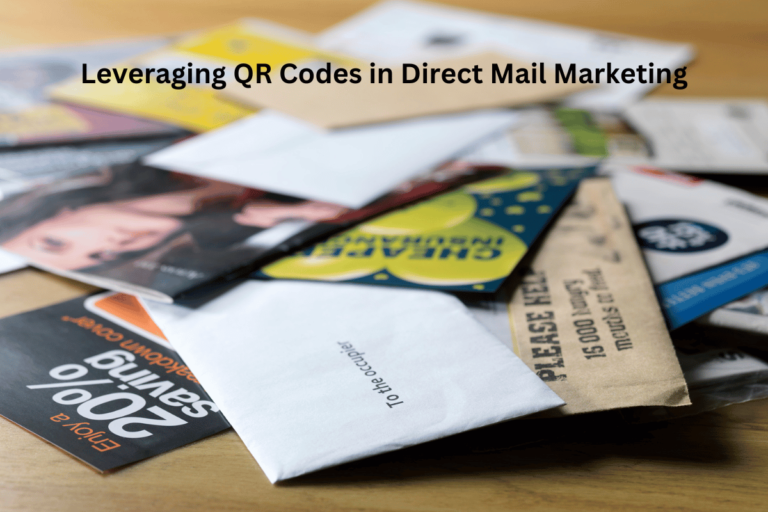Marketing: The Basics
Imagine you are standing on a crowded street corner, trying to capture the attention of passersby. You have a product or service that you believe in, but how do you make others believe in it too?
This is where marketing comes in. In this article, we will explore the basics of marketing, from understanding your target audience to developing strategies and implementing tactics.
Get ready to dive into the world of marketing and unleash the power of your brand.
Key Takeaways
- Marketing mix and target audience are crucial for effective promotion and success.
- Tailoring marketing efforts to target market segments leads to increased success.
- Pricing strategies and competitor analysis help determine optimal price points.
- Understanding target audience demographics and behaviors is important for effective marketing.
Understanding the Marketing Mix
You need to understand the marketing mix in order to effectively promote your product or service.
One key aspect of the marketing mix is target market segmentation. This involves dividing your potential customers into distinct groups based on their needs, preferences, and characteristics. By understanding your target market segments, you can tailor your marketing efforts to better meet their specific needs and desires, resulting in more successful promotions.
Another crucial element of the marketing mix is pricing strategies. Pricing plays a significant role in the success of your product or service. It’s important to set a price that reflects the value you offer while also considering the price sensitivity of your target market segments. By carefully analyzing your competitors’ pricing strategies and conducting market research, you can determine the optimal price point for your product or service.
Understanding the marketing mix is essential for effectively promoting your product or service. By segmenting your target market and implementing appropriate pricing strategies, you can ensure that your marketing efforts are targeted, persuasive, and strategic.
Defining Target Audience
Once you have identified your product or service, it’s important to define your target audience based on their demographics, interests, and behaviors. Identifying demographics is crucial because it helps you understand who your potential customers are. Are they young adults, middle-aged professionals, or senior citizens? Knowing their age, gender, income level, and location can give you valuable insights into how to market your product effectively.
Consumer behavior analysis is another essential aspect of defining your target audience. By studying their behaviors and interests, you can gain a deeper understanding of what motivates them to make purchasing decisions. Are they price-sensitive or willing to pay a premium for quality? Do they prefer online shopping or visiting physical stores? By answering these questions, you can tailor your marketing strategies to meet their specific needs and preferences.
Understanding your target audience allows you to create personalized and targeted marketing campaigns that resonate with them. By speaking directly to their interests, needs, and desires, you can grab their attention and differentiate yourself from competitors. This strategic approach won’t only increase your chances of attracting new customers but also foster loyalty among existing ones.
Developing a Marketing Strategy
Are you ready to take your marketing efforts to the next level?
Developing a marketing strategy is crucial for reaching your target audience effectively and maximizing your return on investment.
By identifying your target audience and understanding their needs and preferences, you can tailor your marketing messages to resonate with them.
Additionally, a well-thought-out budget allocation strategy will ensure that you allocate your resources wisely and focus on the most impactful marketing channels.
Let’s explore these points further and craft a winning marketing strategy together.
Target Audience Identification
When developing a marketing strategy, it’s crucial to identify and understand your target audience. This involves customer segmentation and conducting thorough market research.
By segmenting your customers, you can categorize them into distinct groups based on their demographics, psychographics, and behavior. This allows you to tailor your marketing efforts to each specific group, ensuring that your message resonates with them and meets their unique needs.
Market research helps you gain insights into your target audience’s preferences, buying habits, and pain points. Armed with this information, you can develop a strategic marketing plan that effectively reaches and engages your target audience.
Budget Allocation Strategies
You should carefully consider your budget allocation strategies when developing a marketing strategy. Your marketing budget is a valuable resource that needs to be allocated strategically to maximize your return on investment (ROI).
To do this, you need to conduct a thorough ROI analysis to determine the most effective allocation of your marketing funds.
Start by evaluating the performance of your past marketing campaigns. Identify which channels and tactics have yielded the highest ROI and allocate a larger portion of your budget to these areas. Additionally, consider the specific goals and objectives of your marketing strategy. Allocate more budget to areas that directly contribute to achieving those goals.
It’s also important to keep an eye on industry trends and competitor activities. Stay updated on the latest marketing strategies and allocate budget to explore new opportunities or stay competitive in the market.
Implementing Marketing Tactics
Start implementing marketing tactics by identifying specific target audiences for your products or services. This step is crucial in ensuring that your marketing efforts are focused and effective. By defining your target audience, you can tailor your messaging and marketing channels to reach the right people at the right time.
Once you have identified your target audience, it’s time to dive into the world of social media marketing. Social media platforms offer a wealth of opportunities to connect with your audience, build brand awareness, and drive engagement. From Facebook and Instagram to Twitter and LinkedIn, each platform has its own unique features and user base. Take the time to understand which platforms your target audience is most active on and develop a strategy to reach them effectively.
In addition to social media marketing, it’s important to measure the effectiveness of your marketing campaigns. This allows you to track your progress, identify areas for improvement, and make data-driven decisions. There are various metrics you can use to measure campaign effectiveness, such as reach, engagement, conversions, and ROI. By regularly analyzing these metrics, you can optimize your marketing efforts and ensure you’re getting the most out of your budget.
Implementing marketing tactics requires careful planning, creativity, and strategic thinking. By identifying your target audience, leveraging social media marketing, and measuring campaign effectiveness, you can maximize the impact of your marketing efforts and achieve your business goals.
Analyzing Marketing Metrics
Are you ready to take your marketing efforts to the next level?
By analyzing key performance indicators, you can gain valuable insights into the success of your campaigns.
With data-driven decision making, you can make strategic adjustments to optimize your marketing strategies and achieve better results.
Key Performance Indicators
Examine your marketing metrics to identify key performance indicators. These indicators are crucial for measuring the effectiveness of your marketing efforts and evaluating your performance. By analyzing these metrics, you can gain valuable insights into the success of your marketing campaigns and make data-driven decisions to improve your strategies.
Here are three reasons why key performance indicators are essential:
-
Measuring ROI: Key performance indicators allow you to track the return on investment of your marketing activities, helping you determine which tactics are providing the most value for your business.
-
Identifying strengths and weaknesses: Analyzing metrics helps you identify areas of strength and weakness in your marketing campaigns, enabling you to capitalize on what’s working and make improvements where needed.
-
Setting actionable goals: Key performance indicators provide benchmarks against which you can set actionable goals, helping you drive your marketing efforts towards desired outcomes.
Data-Driven Decision Making
Make informed marketing decisions by analyzing your marketing metrics. Data analysis is a crucial aspect of understanding the effectiveness of your marketing strategies. By examining data such as website traffic, conversion rates, and customer feedback, you can gain valuable insights into consumer behavior and preferences.
This information allows you to make data-driven decisions that are grounded in evidence rather than guesswork. Additionally, predictive modeling can help you anticipate future trends and outcomes based on historical data. By using advanced algorithms and statistical techniques, you can forecast the impact of different marketing initiatives and optimize your strategies accordingly.
Embracing data-driven decision making empowers you to allocate resources more efficiently, tailor your messaging to specific target audiences, and ultimately achieve better marketing results.
Tracking Campaign Success
Once you have implemented your marketing campaigns, it’s important to track their success by analyzing marketing metrics. Measuring effectiveness and implementing analytics will provide valuable insights into the performance of your campaigns. Here are three reasons why tracking campaign success is crucial:
- Identify which marketing channels are most effective in reaching your target audience.
- Determine the return on investment (ROI) of your marketing efforts to ensure you’re getting the best results for your budget.
- Understand customer behavior and preferences to optimize future campaigns and tailor your messaging accordingly.
Building Brand Awareness
You should start by understanding the importance of having at least three different marketing channels to build brand awareness effectively. Brand recognition and visibility are crucial for the success of any business. By utilizing multiple channels, you increase the chances of reaching a wider audience and creating a strong brand presence.
To help you grasp the significance of employing various marketing channels, consider the following table:
| Marketing Channel | Advantages | Disadvantages |
|---|---|---|
| Social Media | Wide reach, interactive, cost-effective | Requires active management |
| Email Marketing | Personalized, direct communication | Risk of being marked as spam |
| Influencer Marketing | Targeted audience, credibility | Costly, potential loss of brand control |
| Content Marketing | Establishes expertise, SEO benefits | Time-consuming to create quality content |
As you can see, each channel has its own set of advantages and disadvantages. By diversifying your marketing efforts, you can amplify your brand’s visibility and recognition.
Nurturing Customer Relationships
To effectively nurture customer relationships, it’s important to consistently engage with your audience through personalized communication and timely follow-ups. Building customer loyalty and ensuring customer satisfaction are crucial for the long-term success of your business.
Here are three strategies to help you nurture these relationships:
-
Personalize your communication: Take the time to understand your customers’ needs and preferences. Use this information to tailor your messages, whether it’s through email, social media, or other channels. By showing that you understand and care about their individual needs, you can build a stronger connection and increase customer loyalty.
-
Provide exceptional customer service: When customers have questions or concerns, it’s important to address them promptly and effectively. Respond to inquiries in a timely manner and go above and beyond to solve any issues they may have. By providing exceptional customer service, you can enhance customer satisfaction and build trust in your brand.
-
Follow up regularly: Don’t let your communication end after the initial sale. Follow up with your customers to see how they’re enjoying your product or service, and offer any additional support they may need. This shows that you value their feedback and are committed to their satisfaction, ultimately fostering long-term loyalty.
Conclusion
Now that you have a solid understanding of the basics of marketing, it’s important to address a common objection: ‘Isn’t marketing just about selling products?’
While the ultimate goal of marketing may be to drive sales, it goes beyond that. Marketing is about building relationships, creating awareness, and nurturing customer loyalty.
By focusing on these aspects, you can create a strategic marketing plan that not only attracts customers but also keeps them coming back for more.
So remember, marketing is more than just selling – it’s about building connections and fostering lasting relationships.



